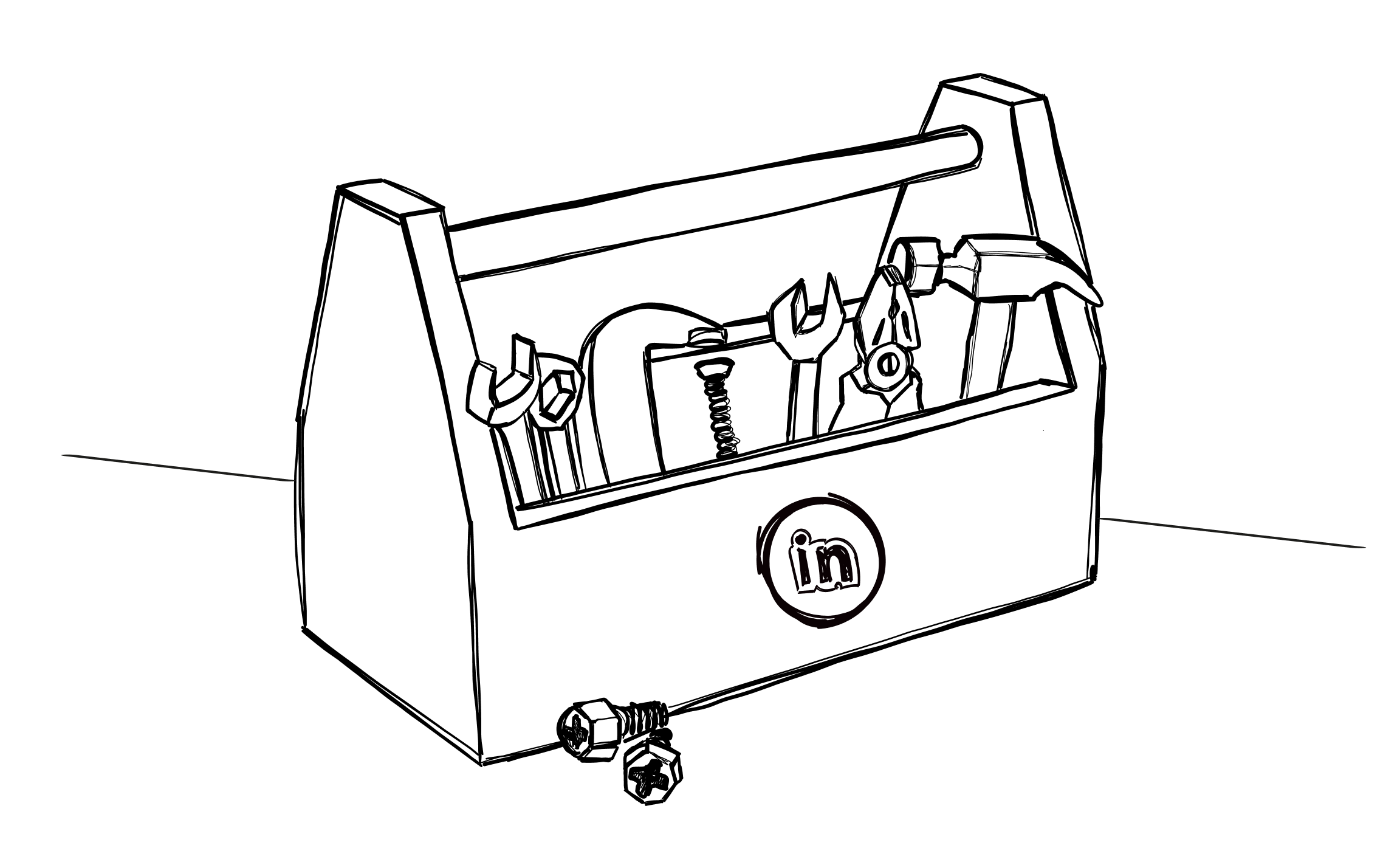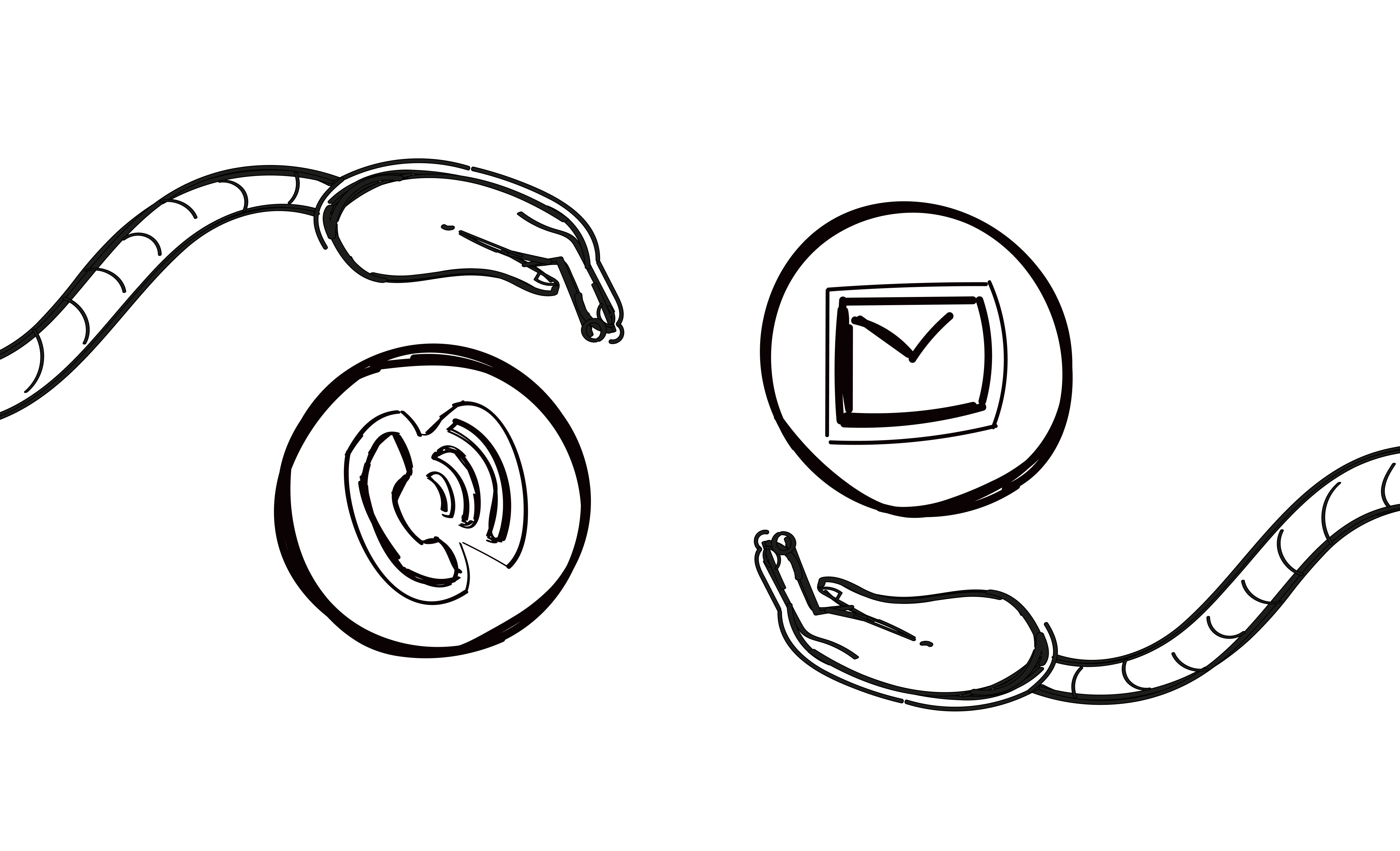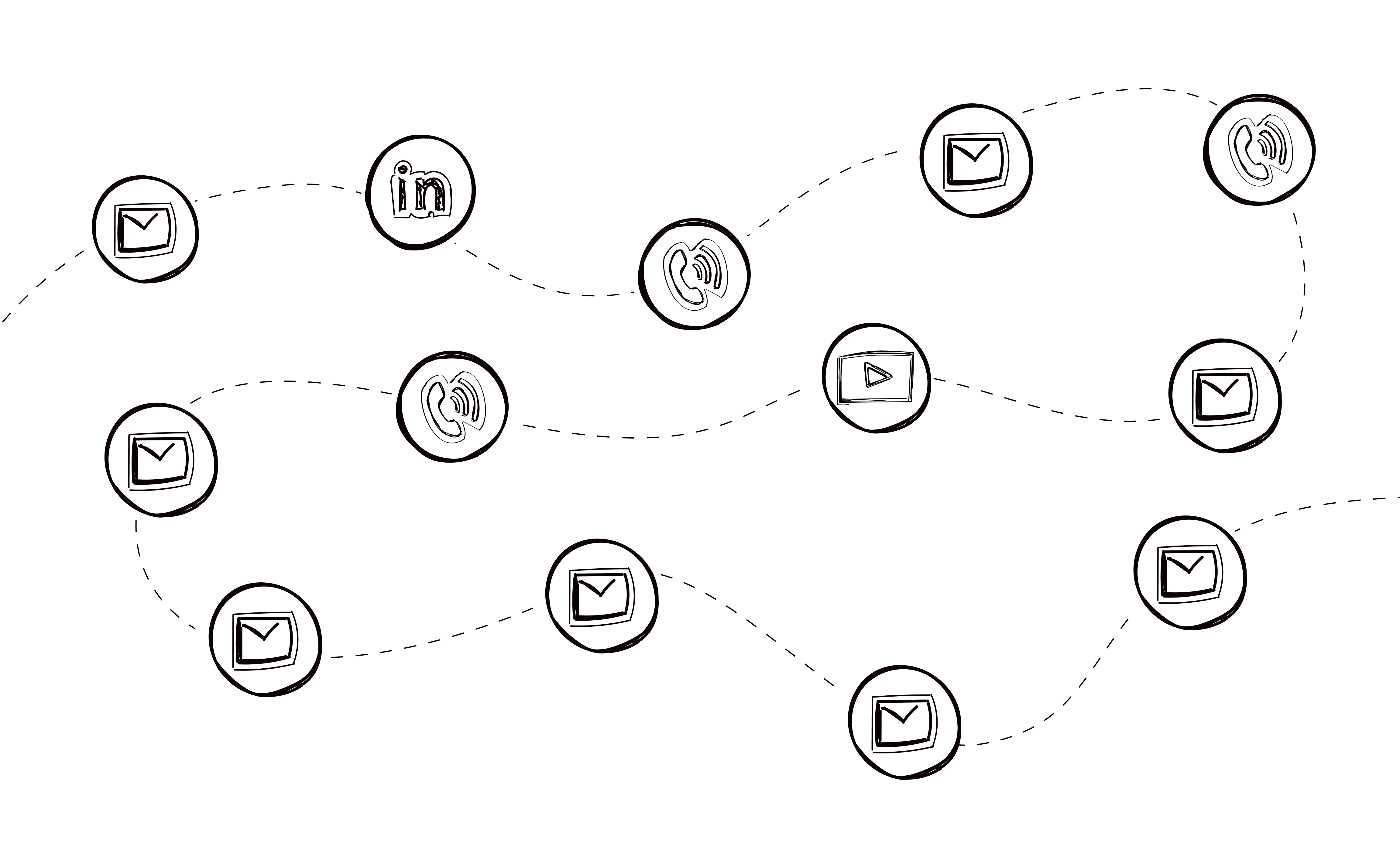When you’re starting from zero as a salesperson using cold outreach, there should be a kind of logic to the sequence of messages you use to get conversations going.
It’s known as a sales cadence, sometimes also called a sales sequence, and it creates a framework for the different stages that you hope to move through with the prospect.
They’re an essential part of any coordinated effort to promote sales, especially in teams, and a lack of a defined sales cadence can leave you without any real plan for achieving your cold outreach goals.
Without it, you’re basically just making it up as you go.
Let’s take a closer look at what sales cadences are all about and some of the elements that make a successful cadence stand out from all the rest.
What is a sales cadence
A sales cadence is a series of emails, cold calls, or other outreach messages that you send to a sales prospect in order to start a conversation with them.
It’s an order that recognizes that you can’t start too strong but still wants to move things forward in a particular direction. It’s a plan to move the prospect from one stage to the next using creative messaging and different touchpoints.
Cadences don’t have to be super-long or detailed. It’s enough to specify schedules for which days messages go out on which mediums, like for example here:
- First contact, Day 1 – Email in afternoon,
- Second, third contact, Day 3 – LinkedIn connection request, call in afternoon
- Fourth, fifth contact, Day 5 – Call anytime, email in afternoon
- Sixth, seventh contact, Day 7 – Email and call, anytime
- Eighth, ninth contact, Day 10 – Email and call, anytime
More detailed plans can include links to email chains, all necessary contact info, etc. The point is that by building a sales sequence with multiple related steps, you keep your sales outreach organized and give yourself the best chance of getting a response, compared to sending a one-off message hoping to catch a prospect’s attention.
The touchpoints typically included in any effective sales cadence are:
- Cold emails. There’s a reason why the oldest electronic communication medium is still the strongest — emails work. Everyone has their own personal inbox, sometimes more than one, and engaging with people there remains the top priority for any sales effort.
- Cold calls. Still the best compliment to cold emails, cold calls have their own pros and cons but they have to be part of your outreach sequence. If the idea is to be where your prospects are, your prospects are definitely on the phone so find a way to make this work.
- LinkedIn. No other social media platform comes closer if we’re talking about making professional contacts. Connection requests, messages, likes & comments — they all put you right in front of your target audience.
A good mix of channels always enhances any outreach program. How many channels should be in the mix? There’s no one correct answer but this is definitely something to look at closer when putting your own cadence together.
The benefits of making (and using) your own sales cadence
There’s a lot to gain by taking the time to create a cadence for your cold outreach campaigns. It’s always better when you’re following steps according to some kind of operational plan and a sales cadence delivers in ways that randomly making calls and sending emails never can. Among other things, you’ll get improvements in these areas:
Scalability
When everyone is working from the same playbook, you can add to your team and, with training and support, be sure that you’re keeping the standards and operating in the same way, small team or huge team.
Flexibility
If you have all the steps written out into a roadmap, it’s easier to examine, change and adapt the individual components when looking for improvements. You can experiment with one part without changing everything.
Awareness
Interacting with you at multiple touchpoints deepens engagement with the prospect. An email followed up by a phone call usually has much more impact than an email followed up by another email. When you’re following a cadence, you can miss a prospect in one stage and reconnect in another.
Responses
The numbers are clear — more follow-ups mean more replies. And doesn’t it just make sense that the more you try to start a conversation, the more successful you will be? Using a sales cadence builds follow-ups into your strategy, which means you can count on more replies than one-off campaigns with no follow-up.
Making your pitch
Sure, you want to make your most effective early in the conversation but when you have a sales cadence, you can spread it out and explain your value proposition in parts. This way, every touchpoint is another reason for the prospect to get more interested.
Testing
Let’s say that cold emails, cold calls and LinkedIn are the three pillars of your cold outreach program. It should be easy for you to track at what point and after what message in the cadence most of your replies come in. This tells you something important about how your message is structured. On the other hand, if there’s a step in the cadence that gets few or no immediate replies, then you know where the problem is and you can work on fixing it right away.
How to create a successful sales cadence
Here are some pro tips for setting up and executing your own cadence taken from a Woodpecker webinar with cold email guru Nick Cegelski. Watch the full version here for all the details.
Be prepared for objections, especially with cold calling
You need to know how to handle objections immediately with answers that reassure the prospect. This means knowing your product inside out and understanding things from the prospect’s perspective.
Start things off right
Asking “How are you?” or “Did I catch you at a bad time?” may seem like nice, polite ways to start things off but in fact they’re terrible mistakes. Why? Because they either sound insincere or give the prospect an easy way to end the conversation right away. There’s no one right way to start conversations but there are lots of wrong ways.
Here’s some of the worst cold calling openers, according to Nick Cegelski:
Give the person you’re talking to control
Create an intro that lets the prospect decide if talking to you further is going to happen or not. “Give me a minute to tell you why I’m calling you specifically and after that you can end the conversation if you want”. How can they say no to giving you a minute?
Do some research, but be reasonable
Too many sales pros use ‘doing research’ for not making the actual call to the prospect. Yes, you need to know something about the person you’re speaking to (use good sources like videos, podcasts or any press coverage of the person) but make sure you spend more time calling and talking, rather than ‘researching’.
But how much time should you spend researching a prospect? Nick has an answer for you:
Be persistent
It’s a cliché but it’s true. You won’t get anywhere if you let rejection, delays and other difficulties get to you. Be on the phone every day or most days because that’s how things happen. Any time you spend away from the phone or reaching out by email is time the prospect is forgetting about you. Be sure to send a connection request on LinkedIn and visit their profile soon after. Make it clear you’re a real person trying to get in touch.
Below, Nick explains why density in your outreach is so important:
Keep focused on solving problems
You’re reaching out because you believe you can solve a problem that is affecting the prospect. Is there some other reason prospects should be interested in talking to you? Every contact with them should be centered around what you can do for them and not who you are.
Know who your audience is (and isn’t)
Just as sales cadences have a purpose, so do Ideal Customer Profiles (ICP). There’s no room in your sales cadence for people who will never be interested in what you’re selling. Leave them out and concentrate on your target audience.
Tracking the results of your sales cadence
You put in the time and effort into building a sales cadence to get better results, but how do you know if it’s working?
There are some basic metrics that should move in the right direction if your sales cadence is effective. Before you start a sales cadence, be sure to document your averages over, for example, the three to six months before you implement it. These are the primary areas to focus on to see how well your sales cadence is working:
- Email open rate
- Email reply rate
- LinkedIn open and reply rates (see here to learn how)
- Call-to-booking-a-meeting ratio
All of these should improve when you have the discipline to follow the structured path that a sales cadence provides.
Time to start your own sales cadence
You may have noticed that we didn’t cover any downsides of sales cadences. That’s because there aren’t any. If you can think of one, let us know. Until then, our position is that sales cadences can only help your cold outreach at just a small cost in time and effort.
Look at what you have to gain and just how easy it is. Just a few minutes of mapping out your engagement path can bring huge results to your sales.
Remember to watch the free webinar mentioned above for all the specifics and details of the topics covered here.
And download Nick’s ready-to-use 25-day sales cadence plan here.
READ ALSO

14 LinkedIn Automation Tools That Make Outreach Easier & More Efficient
Sales and marketing teams have long known about the potential goldmine of contacts to be found on LinkedIn but many are just now discovering the shortcuts to success offered by LinkedIn automation tools.

Cold Calling, Cold Emailing — One, the Other or Both?
When you’re the one starting a conversation with a sales prospect, cold calls or cold emails are usually the way you get the ball rolling.

Cold Email Outreach in the US & the UK: What Works?
To get the best advice on reaching prospects in markets where everyone *ekhm* wants a slice of the cold email pie, I talked to a few Woodpecker Experts who consistently generate leads in those markets: Veth Group, Nerdwise, We Are Team Rocket, and LevelUp Leads.

